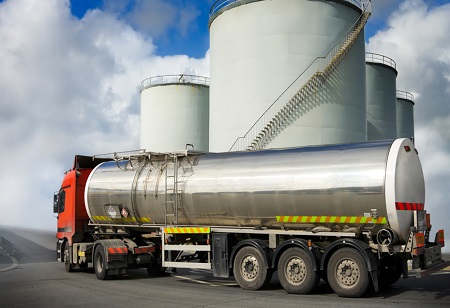Due to the acceleration in domestic industrial growth and a need for increased transportation capacity, many new trends have been introduced to increase the supply chain efficiencies. The
trends in liquid logistics industry are dependent on significant changes that are driven by the implementation of technology driven innovations in business processes. A recent study found that the global
liquid logistics market is expected to grow from $43.86 billion in 2020 to 47.13 billion in 2021 at a compound annual growth rate of 7.5 percent.
“The next generation liquid logistics management solutions are moving towards making the supply chains more customer-centric and sustainable”, says A Kabra, CEO, Bulk Liquid Solutions. The use of automation in liquid logistics has brought out a significant increase in productivity and efficiency in the workflow. The improvement of traceability and transparency of the liquid logistics is vital to maintain a flexible and dynamic relationship between the various stakeholders.
Improved Resin Materials of Liquid Containers
Logistics Companies are trying to make process of loading, unloading and transporting more efficient which will also save their time and fuel costs. New efficiencies brought in by technology helps the liquid logistics companies in reducing carbon emissions and other types of pollution. In the recent times, the use of bulk liquid containers with improved resin material has increased in the logistics industry.
These resin materials reduces the transport failures and increases the longevity of the containers. Liquid logistics companies use these advanced containment systems to protect the products and hence gain the trust of customers. Experts believe that it’s more economical to use larger, more durable bulk liquid containers compared to smaller containers which generally have a shorter service life.
Use of Intermediate Bulk Containers
The environmental friendly advanced plastic is used by logistics industry. It is used in the manufacturing of Intermediate Bulk Containers (IBCs) such as drums and totes which plays a crucial role in the liquid logistics industry. IBCs are considered among the safest form of carriage and it can be reused, which helps to reduce the waste.
Experts say that it is good to use larger bulk liquid containers with greater durability as compared to smaller containers, which usually have a shorter service life and wear out in a short span of time through continual use. Also, Intermediate Bulk Containers are significantly lighter than stainless steel tanks and a lighter load increases the fuel efficiency of liquid logistics trucks.
Introducing Smart Container Formats
The adoption of standard packaging has changed the entire liquid logistics industry, bringing major performance improvements and trade facilitation. However, the need to diversify container volumes and increasing cost and time pressures require new container formats and packaging processes, especially in the context of logistics network being general use and the same development of urban delivery. New form of packaging is also essential to handle the volume of single orders shipped in e-commerce.
Warehouse Automation
Warehouse Automation has increased efficiency, speed and productivity by reducing human interventions. Pick and place technologies such as Automated Guided Vehicles (AGVs), Robotic Picking, Automated Storage and Retrieval (ASR) and put-wall picking reduce error rates and increases warehouse productivity. Liquid logistics industry has realised that warehouses require a combination of efficient automation technologies in order to control their operational logistics costs.
Automated Guided Vehicles substitute human labour for addressing challenges regarding processing high volume liquid at scale. Addverb Technologies is an Indian startup which offers a customised dynamo AGV with different guidance systems including laser, inertial, wire and magnetic tape. Dynamo requires minimum to no human interference in the execution of loading and unloading of liquid materials.
Robotic Process Automation
Robotic Process Automation (RPA) offers automation of repetitive tasks in liquid logistics without any human error and reduces overhead costs. Liquid logistics companies optimize software robotic processes in order to deliver insights and analytics for process improvement. Also, collaborative robots are used to work with human workers, offer assistance and enhance productivity in logistics operations. These robots fill the liquid containers in a brief span while eliminating potential human errors.
Many startups are working to create various collaborative robots to facilitate supply chain processes. These robots are capable to facilitate a wide range of flexibility and movement that mimic the human arm. Additionally, these robots assist human workers in picking and placing the small liquid containers, palletizing and packaging operations.
Expectations from Future
With the continuously increasing customer expectations and as the interests shift towards product variety and personalised services, the Indian liquid logistics industry is focusing to ramp up capacities, improve customer centricity and fast track deployment of new technologies. It will enable liquid logistics industry to cater to prospects of growing demand in end user industries. Technology is changing the landscape of the sector globally at a very fast rate. Industry is thinking to increase the use of robots as it helps to reduce the risk of exposure and downtime, thereby increasing efficiency. Similarly, use of IoT and software can inform operators if a tank is being heated or blended, what pumps are being used etc.
